We won’t get too deep into the actual box on this one as it is very similar to the one that the Rampage III Extreme comes in. It has the same graphic on the front (the starburst in the corner) along with the same logos along the bottom. It really just looks like a chopped off RIIIE box.
Opening the front flap gives you the first indication that something is not the same. Unlike the larger versions there is no window to see your new motherboard on the RIIIG. Instead there is a listing of some of the major features.
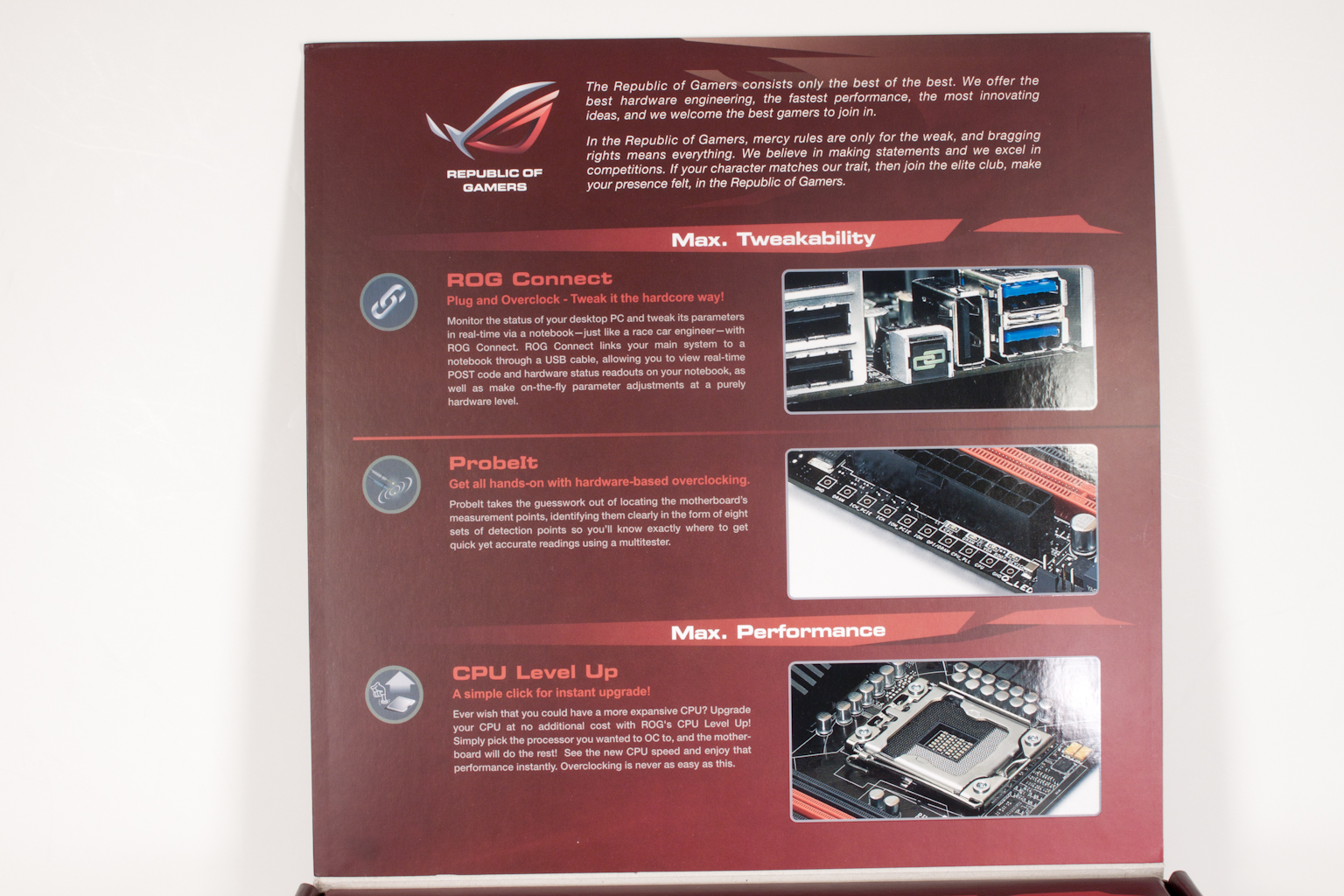 |
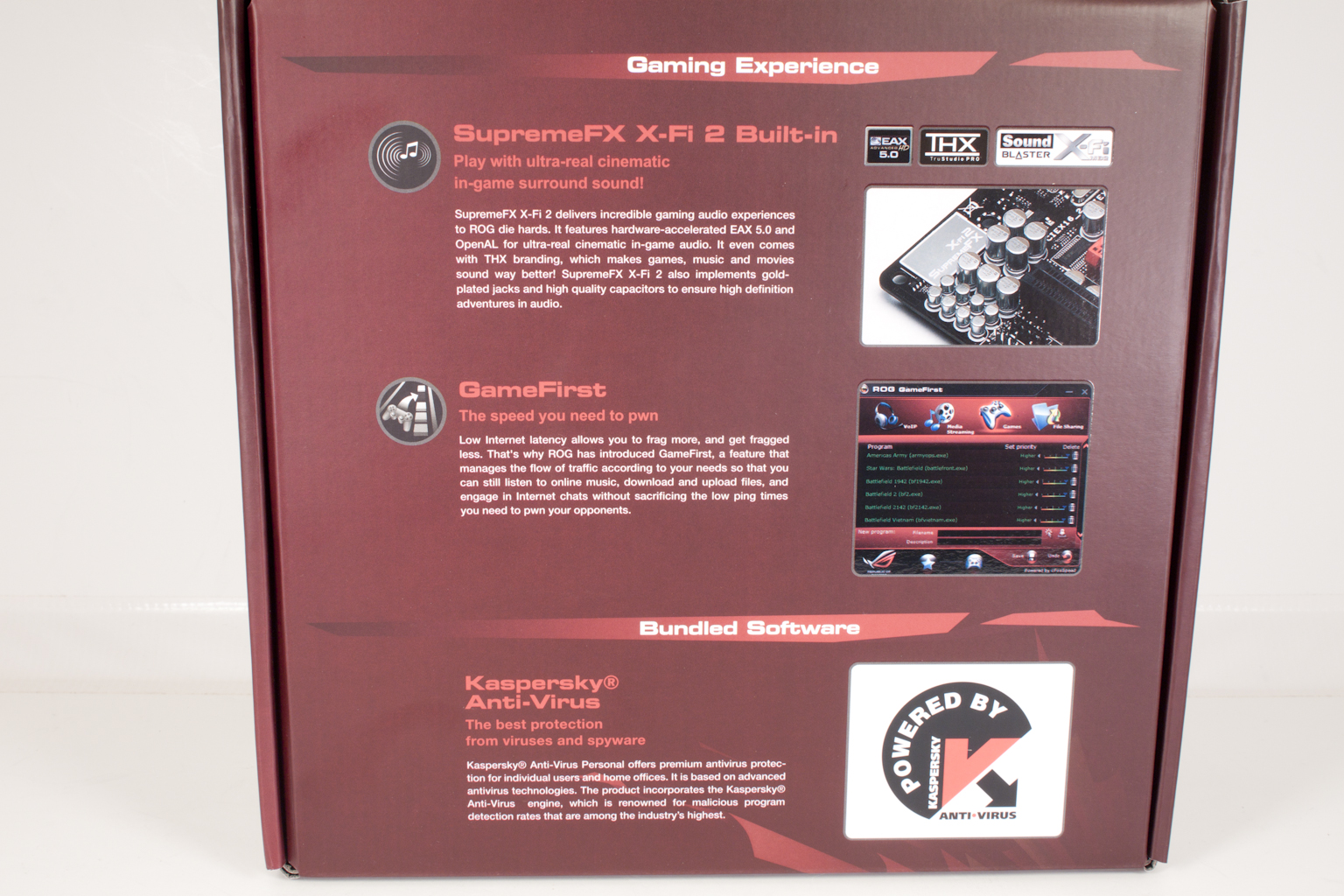 |
Now remember how we said it was perfect for LAN party cases? Well under the flap we see our first indication that this is a LAN party geared board. This is the GameFirst feature. GameFirst is a fancy name for a software based QoS system that can work regardless of the LAN you are connected to. It is a nice feature in on paper, later we will see if it really works. The X-Fi feature shown here does not mean you are getting a Creative Labs X-Fi; what is means is that Asus has bought the right to install the X-Fi software on the existing audio CODEC. In this case another Via CODEC (SupremeFX).
The back of the box is just a repeat of the inside flap with a detailed specification listing. Inside the outer box is another inner box which brings back the feel of the RIIIE and other ROG boards.
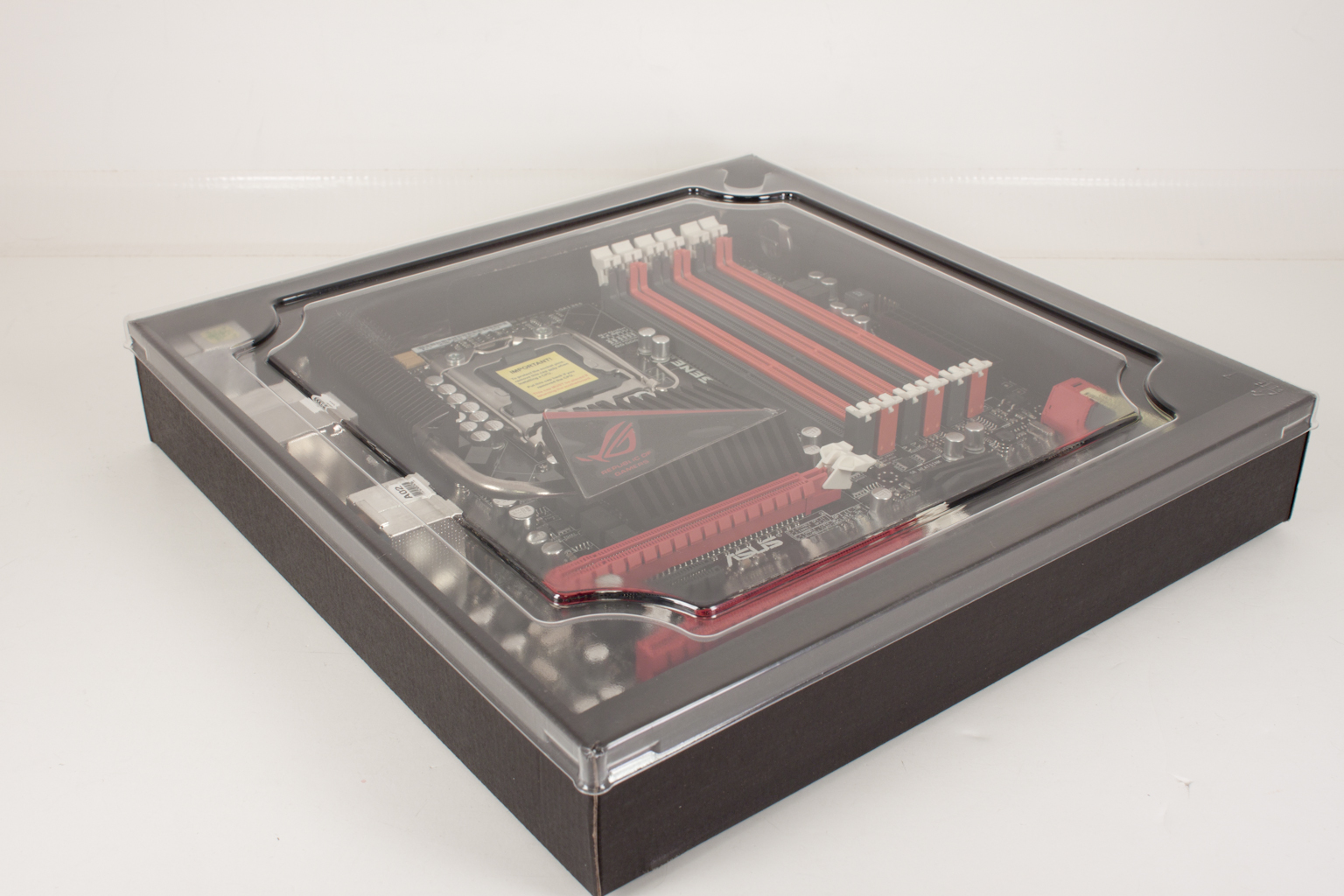 |
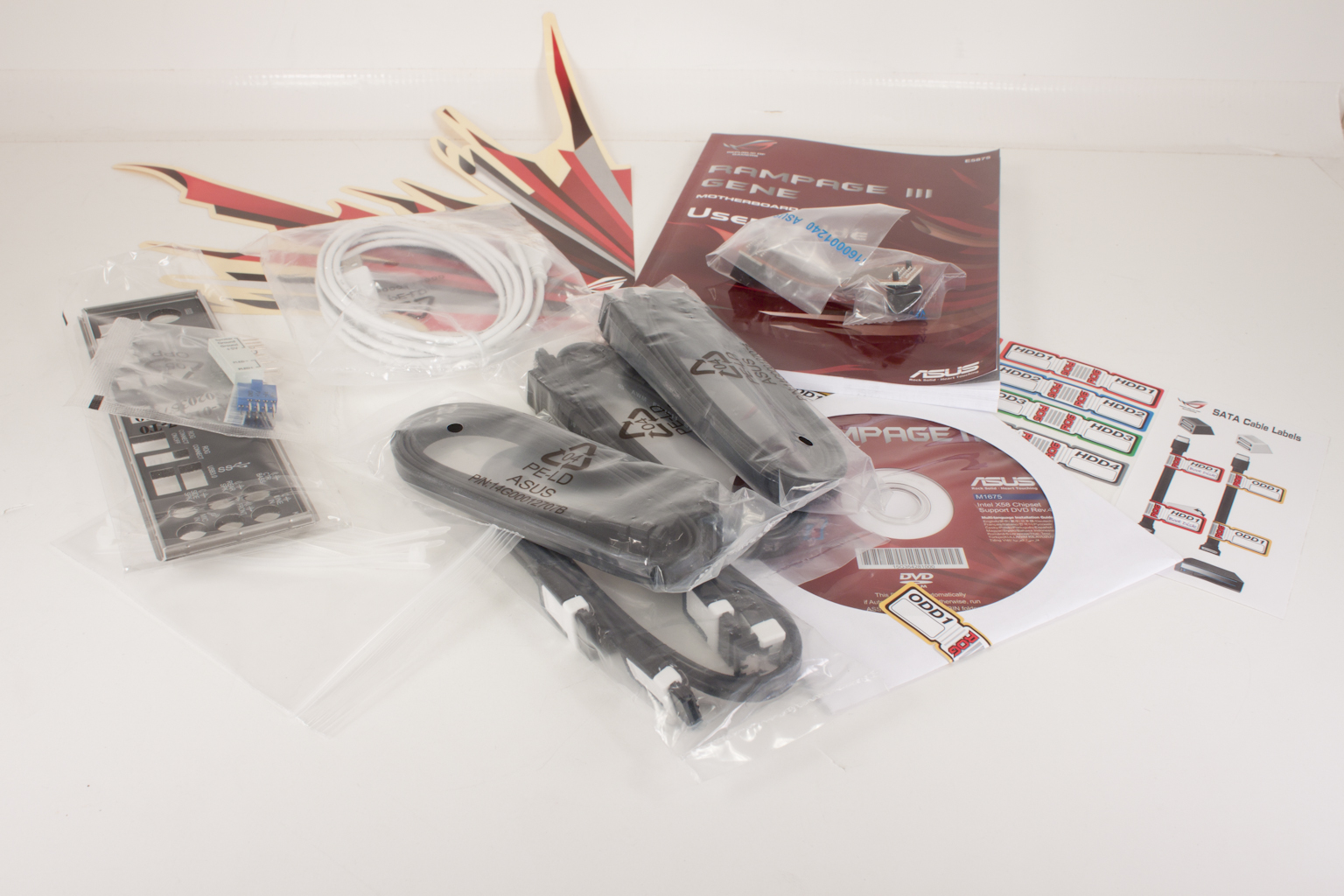 |
The loot for this one is still up there in terms of the things you get. You get three pair of SATA II cables, two SATA 3.0 cables, a Crossfire/SLI bridge, the ROG Connect cable, stickers to label everything, manual, driver/utility DVD, I/O shield and a large case sticker shaped like the starburst on the front of the box.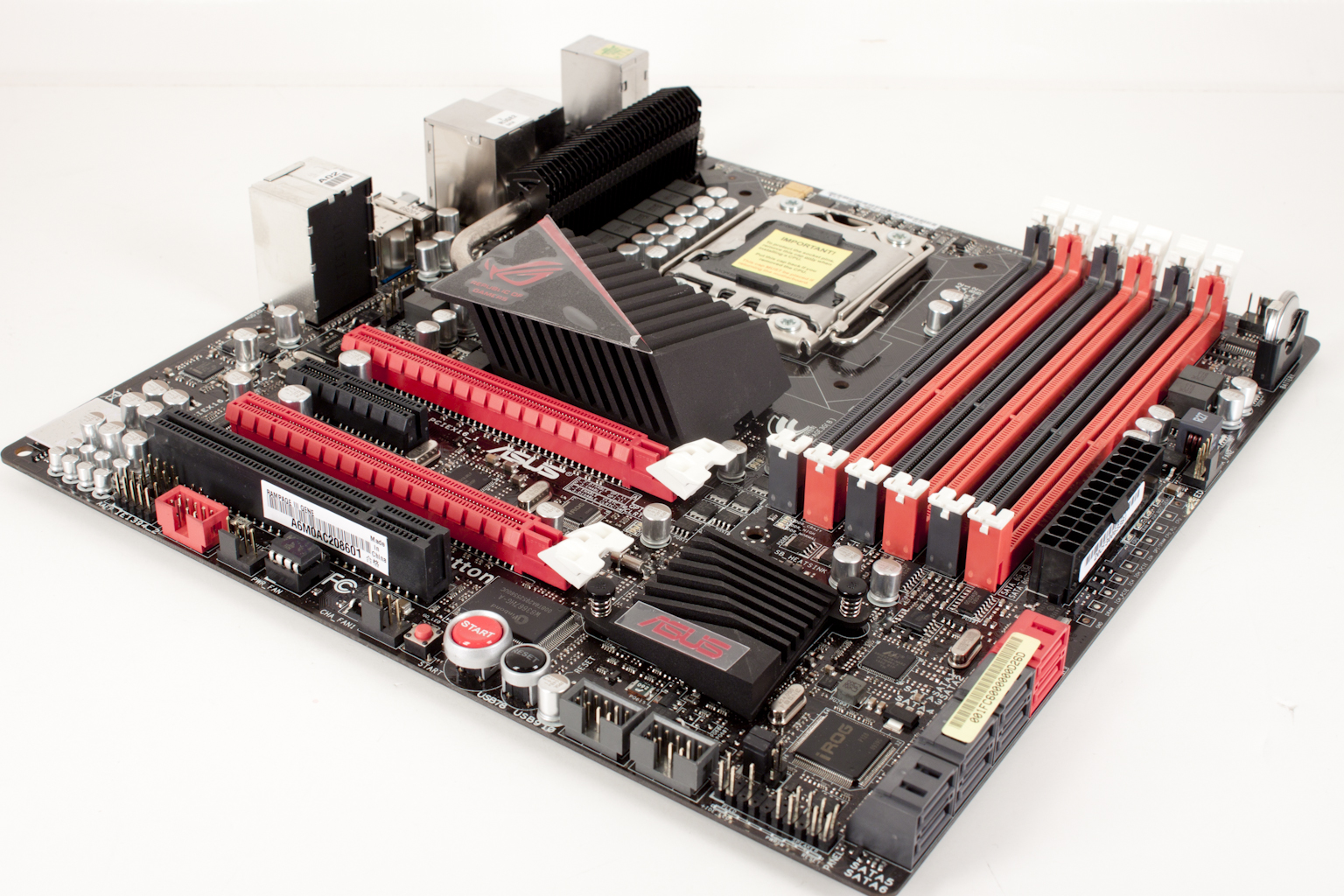
Pulling the board from the box we find the RIIIE in miniature, well sort of. As we mentioned above the RIIIG is a micro ATX board. It has a full X58 chipset and six slots for RAM crammed around a LGA 1366 Socket. To call the tracing on this board complicated would be an understatement.
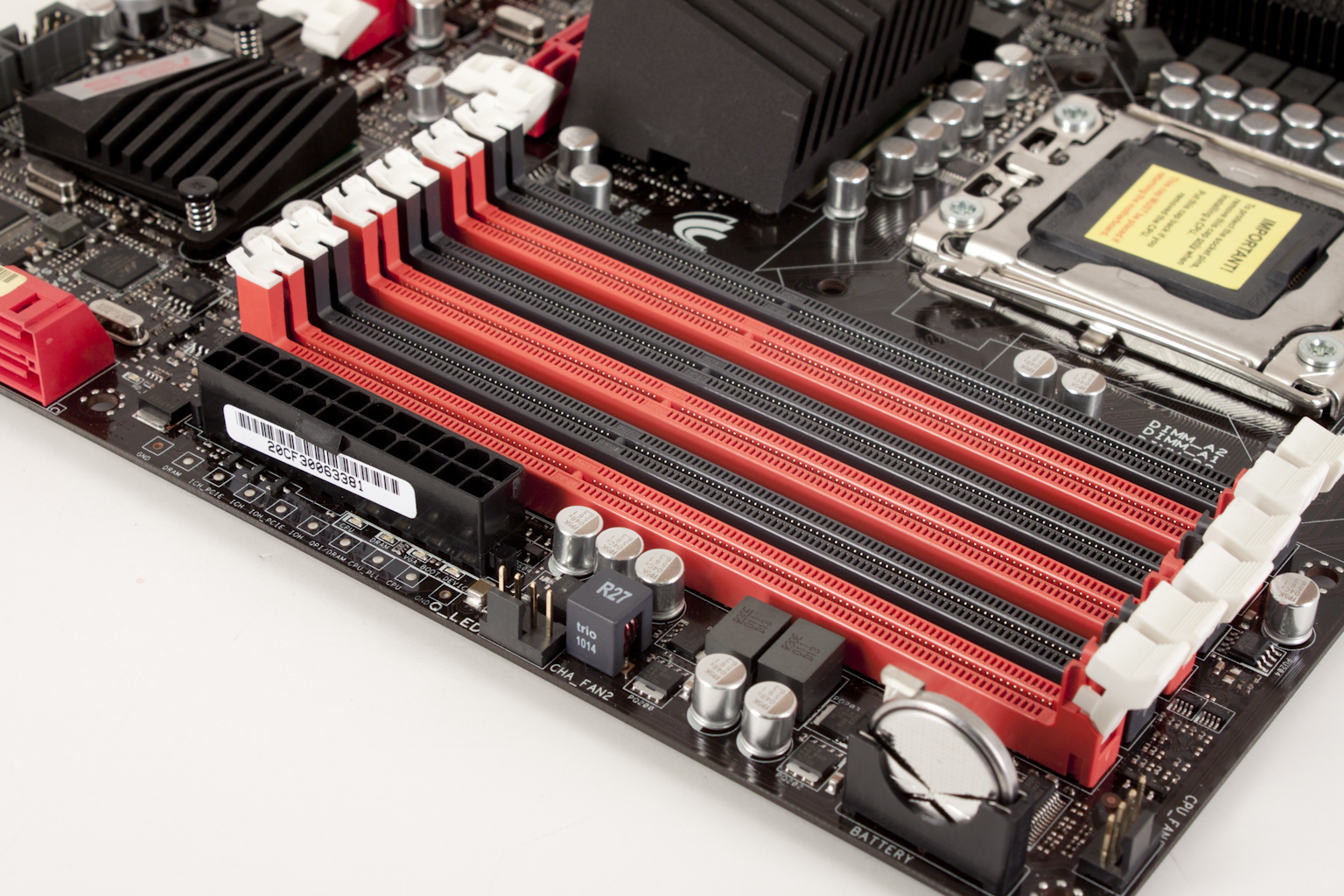 |
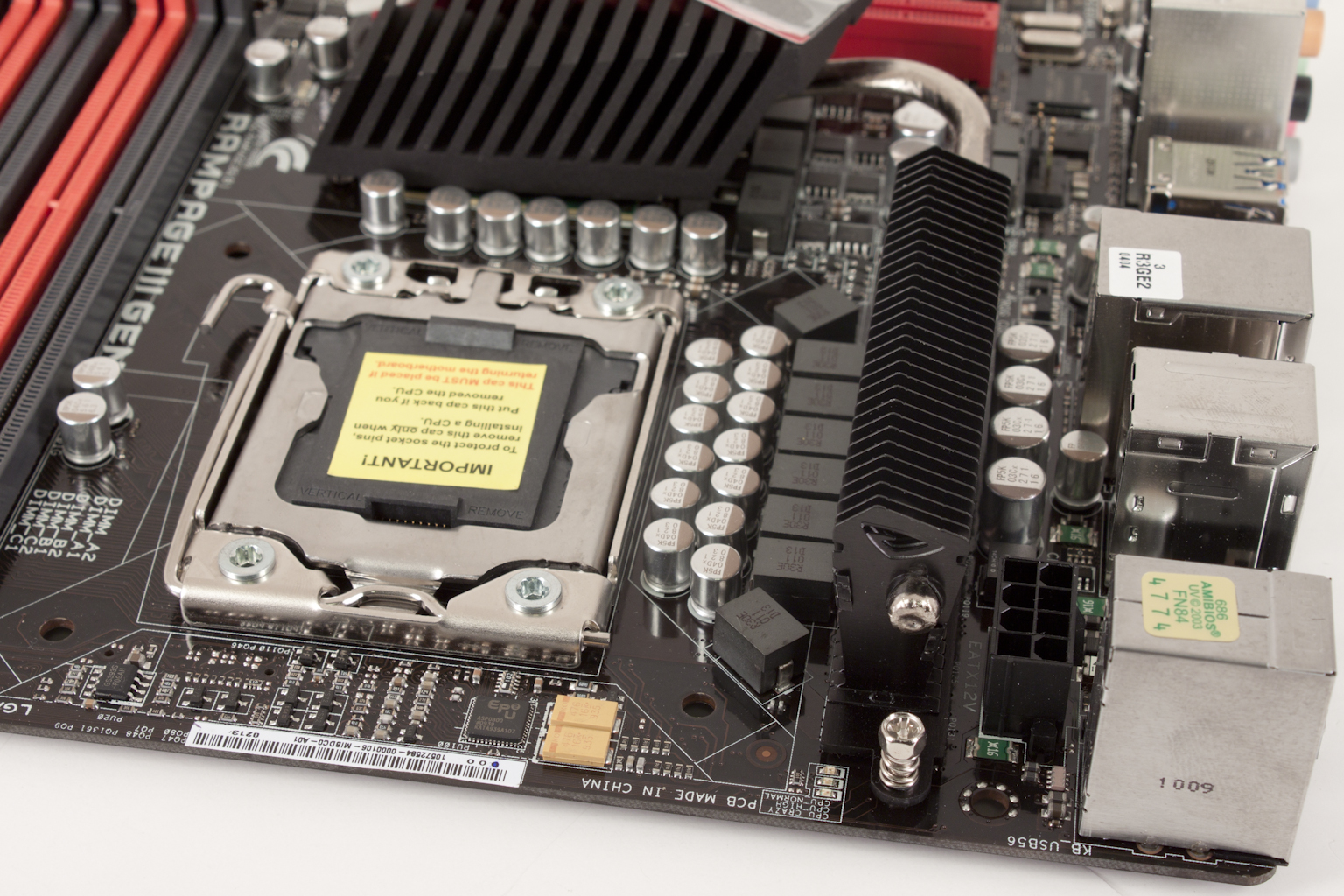 |
As this is still and ROG board you will find voltage monitor points on the board right next to the 24-pin ATX power connector. Oddly there is also a four-pin fan header right hear along the edge of the board, it is labeled CHA_FAN2. In the corner, right next to the CMOS battery, we see a CPU fan header. Again this is a little bit of an odd placement, but it is still easy to reach. The CPU space is a complete departure from the RIIIE. The nice FPCAP is missing and the cap, choke and VRM layout is very different from what we have seen on the RIIIE. The 8-pin Aux power connector has been put in a little bit of an awkward place making it a chore to get connected. I would recommend getting an extension cable for this one.
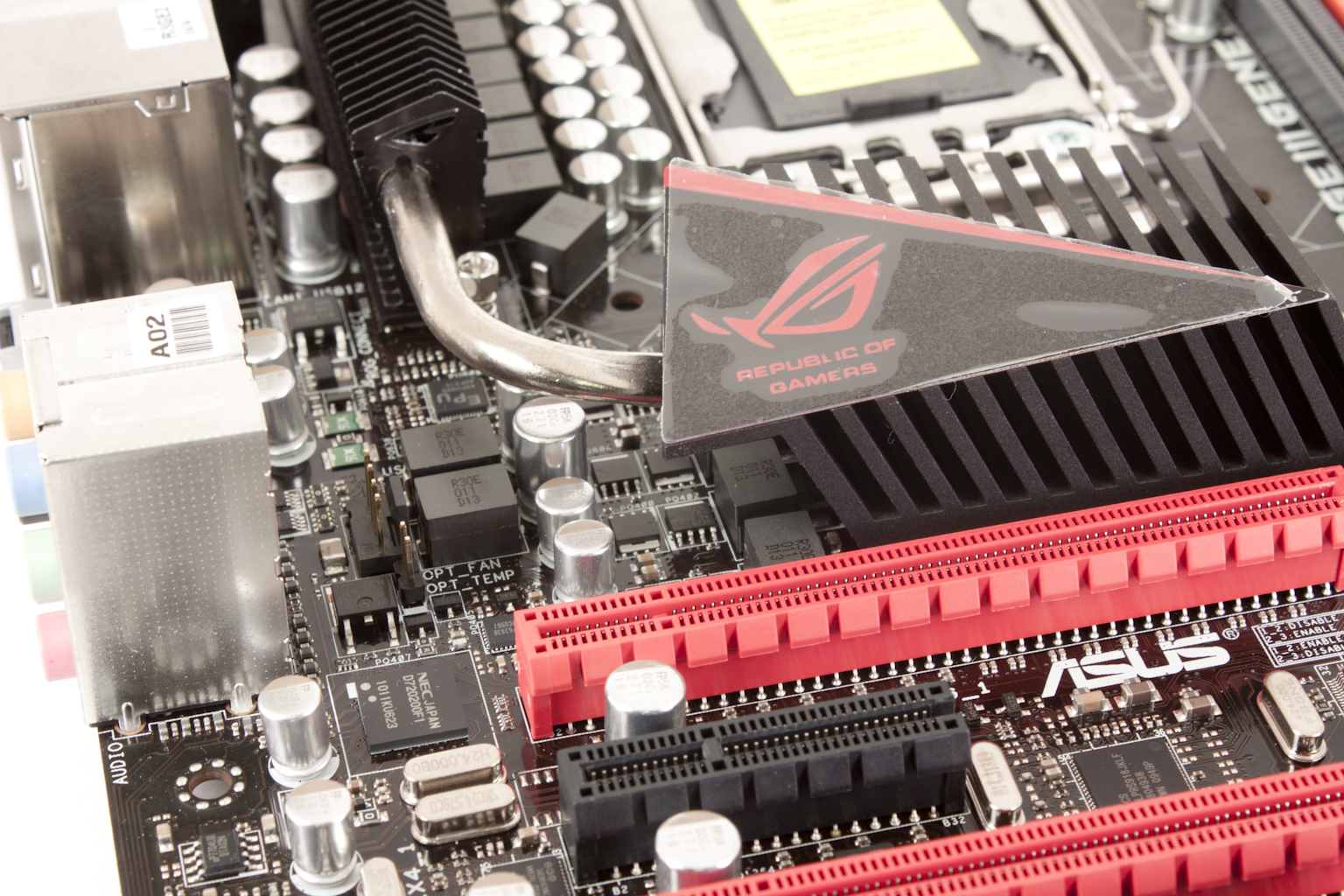 |
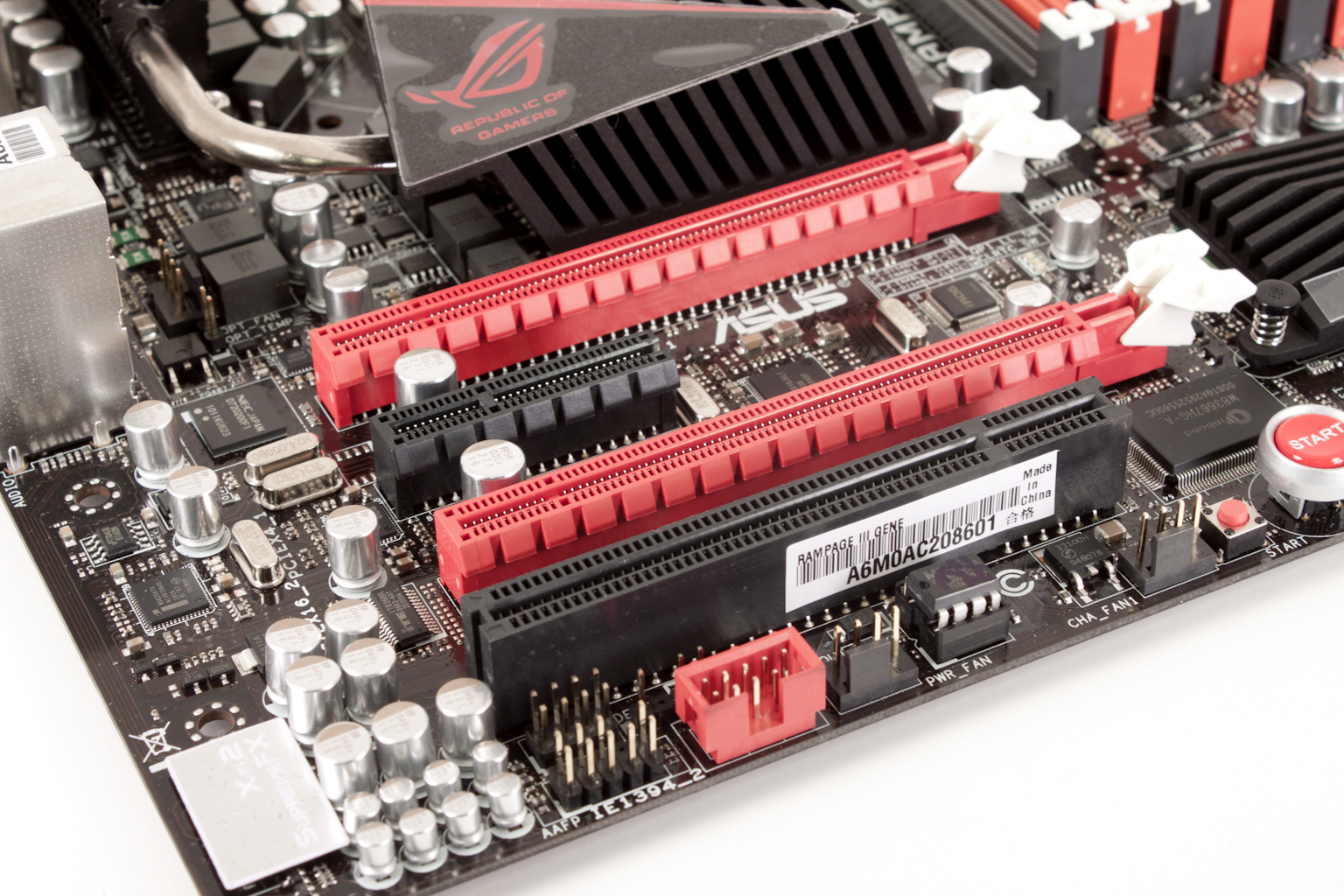 |
In this shot you can see how close the X58 Northbridge cooling is to the primary PCIe slot. However, this placement can’t be helped with the size of the board and the number of slots that Asus wanted to get onto it. Speaking of slots, here we have a great view of them. There are two fully x16 PCIe 2.0 slots along with an x4 PCIe slot and a PCI Gen 2 slot. In this shot we can also see the 1304 header, the Audio Front Panel header, the cover for the SupremeFX X-FI (although it is whited out). The GoButton and the nice power (labeled Start) are also visible in this shot. The GoButton is a very cool feature. It can be used to dynamically set the proper memory settings on your system or, when you are in windows, you can use it to switch to a preset overclocked profile.
Looking at the lower portion of the RIIG from the other angle we find the typical Six SATA II ports and two Marvell controlled SATA 3.0 ports. These two SATA 3.0 ports are also controlled by Asus’ Drive Expert giving you fast options for setting up SATA 3.0 RAID in the BIOS. You will also notice (right above the front panel header) a pair of jumpers. The lower one is to reset the BIOS while the top one is the QPI voltage jumper. This jumper prevents the QPI voltage from dropping too low during overclocking for better stability.
Flipping around to the back we find ports very similar to other ROG boards. We can see the USB 3.0, the ROG connect port and switch, and other fun stuff. I would have liked to see the RC Connect in there, but that was not the case. So with all that out of the way, we are going to drop our Core i7 980X onto this thing and see what we get. I have a feeling we will be impressed with this board, after all it is cut from the same cloth as the other ROG products and they all have been well above the curve.
-Ath
















